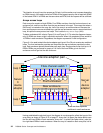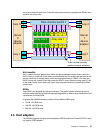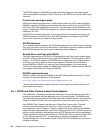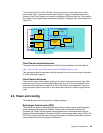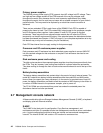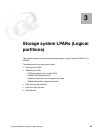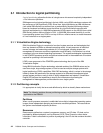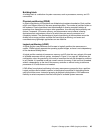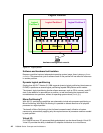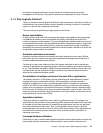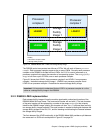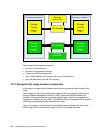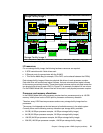
44 DS8000 Series: Concepts and Architecture
3.1 Introduction to logical partitioning
Logical partitioning allows the division of a single server into several completely independent
virtual servers or partitions.
IBM began work on logical partitioning in the late 1960s, using S/360 mainframe systems with
the precursors of VM, specifically CP40. Since then, logical partitioning on IBM mainframes
(now called IBM zSeries) has evolved from a predominantly physical partitioning scheme
based on hardware boundaries to one that allows for virtual and shared resources with
dynamic load balancing. In 1999 IBM implemented LPAR support on the AS/400 (now called
IBM iSeries) platform and on pSeries in 2001. In 2000 IBM announced the ability to run the
Linux operating system in an LPAR or on top of VM on a zSeries server, to create thousands
of Linux instances on a single system.
3.1.1 Virtualization Engine technology
IBM Virtualization Engine is comprised of a suite of system services and technologies that
form key elements of IBM’s on demand computing model. It treats resources of individual
servers, storage, and networking products as if in a single pool, allowing access and
management of resources across an organization more efficiently. Virtualization is a critical
component in the on demand operating environment. The system technologies implemented
in the POWER5 processor provide a significant advancement in the enablement of functions
required for operating in this environment.
LPAR is one component of the POWER5 system technology that is part of the IBM
Virtualization Engine.
Using IBM Virtualization Engine technology, selected models of the DS8000 series can be
used as a single, large storage system, or can be used as multiple storage systems with
logical partitioning (LPAR) capabilities. IBM LPAR technology, which is unique in the storage
industry, allows the resources of the storage system to be allocated into separate logical
storage system partitions, each of which is totally independent and isolated. Virtualization
Engine (VE) delivers the capabilities to simplify the infrastructure by allowing the
management of heterogeneous partitions/servers on a single system.
3.1.2 Partitioning concepts
It is appropriate to clarify the terms and definitions by which we classify these mechanisms.
Partitions
When a multi-processor computer is subdivided into multiple, independent operating system
images, those independent operating environments are called partitions. The resources on
the system are allocated to specific partitions.
Resources
Resources are defined as a system’s processors, memory, and I/O slots. I/O slots can be
populated by different adapters, such as Ethernet, SCSI, Fibre Channel or other device
controllers. A disk is allocated to a partition by assigning it the I/O slot that contains the disk’s
controller.
Note: The following sections discuss partitioning concepts in general and not all are
applicable to the DS8000.



